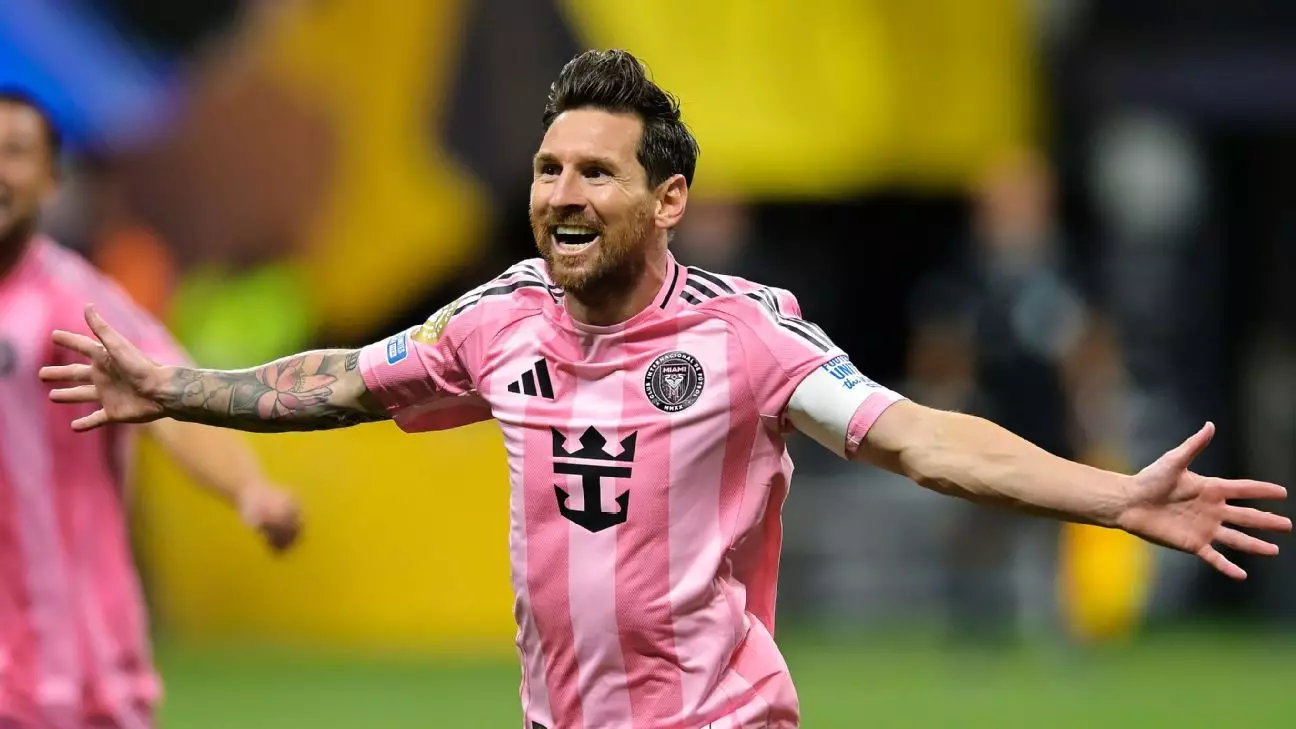The world of Major League Soccer (MLS) has seen dramatic shifts in player compensation over the past few years, with Lionel Messi at the forefront of this evolution. Despite his relatively recent move to Inter Miami, Messi has already solidified his position as the highest-paid player in the league for the second consecutive year, earning a staggering $20.45 million in guaranteed compensation. This figure, released by the MLS Players Association, is not merely reflective of the sporting world’s wages but symbolizes the immense value and marketability that a player of Messi’s caliber brings to a league eager to elevate its profile on the global stage.
His compensation package extends far beyond the turf, encompassing lucrative endorsement deals and revenue-sharing agreements that could propel his earnings to an astonishing $150 million over his two-and-a-half-year contract with MLS. These figures underline an important trend: the extraordinary worth that elite players represent in the ever-competitive sports landscape.
Breaking Down the Numbers: The Financial Landscape
To contextualize Messi’s dominance, it’s essential to analyze the league’s financial ecosystem. Following Messi, Toronto FC forward Lorenzo Insigne is the second-highest earner at $15.44 million, a significant gap that illuminates Messi’s unparalleled marketability. The disparity continues down the list; Inter Miami’s Sergio Busquets comes in at $8.5 million, while Atlanta United’s Miguel Almirón earns $7.87 million. Such figures suggest that while MLS is increasing its financial commitment to players, the presence of an icon like Messi skews the balance dramatically.
In stark contrast, CF Montréal languishes at the other end of the spectrum as the league’s lowest spender at $11.99 million, highlighting the growing divide between the ‘haves’ and ‘have-nots’ in the MLS arena. The trend of inflated team salaries, with Inter Miami leading the pack at a whopping $46.84 million, raises questions about the sustainability of such spending and its long-term impact on league competition.
The Growth of Player Compensation: A League on the Rise
The average guaranteed compensation across MLS has ticked upward, notably increasing 9.22% from $594,390 last spring to $649,199. This upward trajectory speaks to the MLS’s commitment to growing its player pool’s financial security; however, the median salary—$339,876—further emphasizes the disparity within the league. While 131 players now earn over $1 million, this number is still a fraction of the entire playing pool. It suggests progress, yet simultaneously highlights the potential for inequities that could undermine team cohesion and competitive balance.
MLS’s current Collective Bargaining Agreement (CBA), which extends until the end of the 2027 season, represents a critical juncture in player compensation. As player salaries rise amidst a professional sports landscape that is increasingly lucrative, the agreement needs careful monitoring to ensure it fosters balance while rewarding talent equitably.
The Future: A Star-Driven League
Lionel Messi’s impact on MLS extends beyond just numbers. He is not merely a player; he is a brand and a transformative figure whose influence can catapult the league onto international stages. His participation has sparked discussions about the potential to attract even more elite talent, thereby enhancing the competitiveness and visibility of the league. The success of such star signings will ultimately depend on the MLS’s ability to maintain a competitive balance while also incentivizing clubs to invest in their development systems to cultivate homegrown talents.
Moreover, as revenues from broadcasting deals, sponsorships, and merchandise continue to rise, the economic landscape for MLS appears promising. The league’s stakeholders must harness this momentum to create a sustainable growth model that benefits both players and franchises, ensuring that the gap between high earners and average professionals does not grow unmanageable.
The explosive changes brought on by Messi’s presence in MLS underscore a vital truth: superstar players wield unprecedented influence and can reshape the professional sports landscape. However, alongside this glamour and financial uplift lies an obligation—to preserve the integrity and competitiveness that make sports enthralling in the first place. As MLS navigates this pivotal period, it will be fascinating to watch how this dynamic evolves amidst the pursuit of sporting glory and economic viability.

